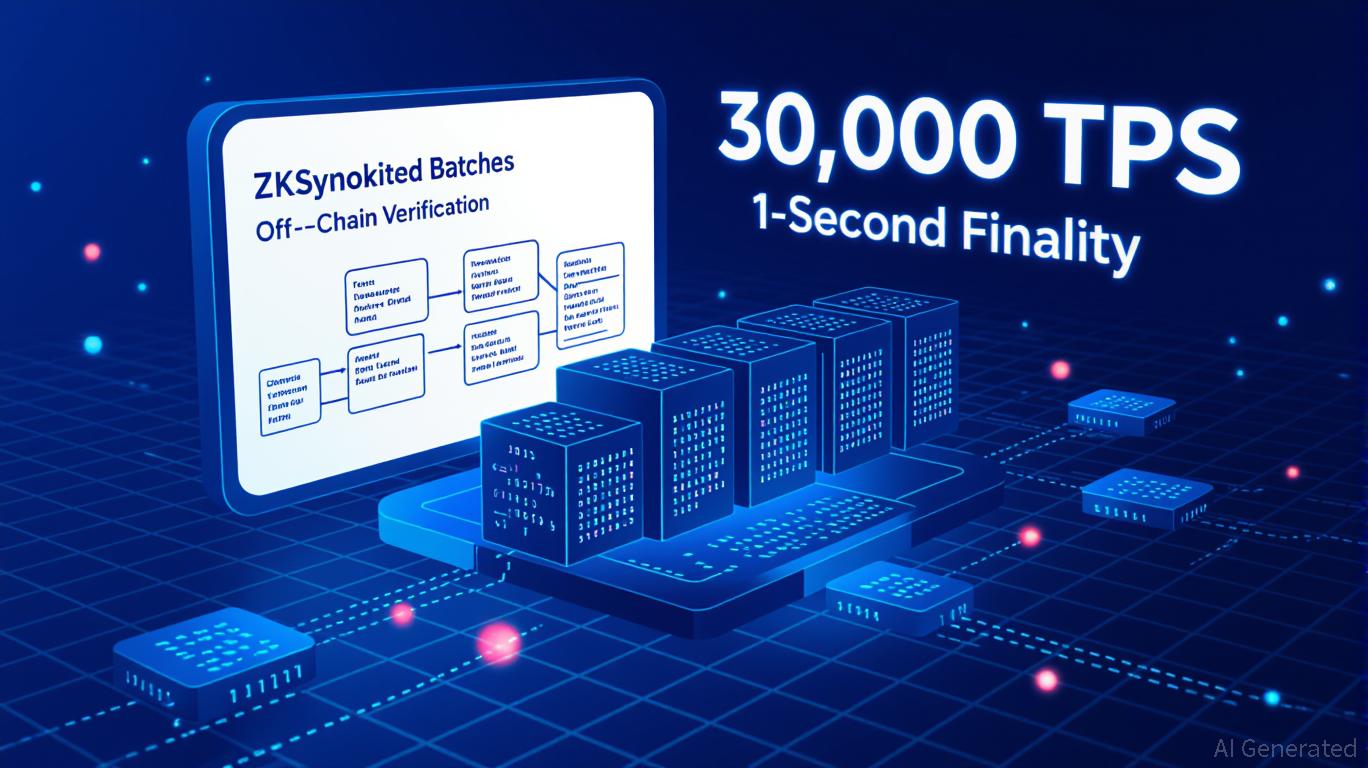Bitcoin Price Fluctuations and Institutional Involvement in November 2025: Signs of Market Maturity or Continued Speculation?
- Bitcoin's November 2025 volatility (41% spike post-September) reflects maturing institutional strategies amid $20B October liquidations. - $7.8B in Q3 2025 ETF inflows and $200B institutional holdings signal Bitcoin's shift from speculative asset to treasury tool. - Hedging mechanisms (covered calls, AI trading) reduced daily volatility to 2.1%, yet macro risks persist as seen in October's crash. - Galaxy Digital's $120,000 price cut and lingering retail speculation highlight Bitcoin's dual identity as b
Volatility: Opportunity and Risk
November 2025 saw Bitcoin’s 30-day volatility index reach new highs. After months of relative calm from March through September—largely due to steady institutional buying—the index surged by 41% after September, heightening market uncertainty, according to the

Institutional Adoption: From Speculation to Strategic Asset
Institutional participation in Bitcoin has reached record highs. By the third quarter of 2025, spot Bitcoin ETFs saw net inflows of $7.8 billion, with $3.2 billion pouring in during just one week in October, according to the
The ongoing strength of ETF inflows further highlights Bitcoin’s evolution. By October 2025, Bitcoin ETFs managed $127 billion in assets, overtaking gold ETFs and signaling a change in investor sentiment, as reported by the
Hedging and the Evolving Landscape
The influx of institutional investors has also brought advanced hedging techniques that help moderate volatility. Strategies like covered calls, basis trades, and put-selling vaults enable institutions to earn yield while reducing risk from price swings, according to the
Nonetheless, these risk management strategies do not fully eliminate volatility. Bitcoin continues to see frequent double-digit price changes, driven by global economic trends and geopolitical events, according to a
Conclusion: Progress Amid Persistent Risks
The data reveals a complex picture. Institutional involvement has clearly advanced Bitcoin’s market, curbing extreme volatility and establishing it as a treasury asset. However, the October downturn and Galaxy Digital’s lowered price target show that speculative risks have not disappeared. The crucial difference now lies in the drivers of volatility: while retail speculation once led to unpredictable swings, today’s movements are increasingly shaped by institutional strategies and broader economic factors.
For investors, this means Bitcoin’s function in portfolios is changing. It is no longer just a speculative asset, but a strategic holding that demands careful risk management. As institutions continue to innovate in yield generation and hedging, the boundary between speculation and maturity will become even less distinct, pushing markets to adjust to a new reality.
Disclaimer: The content of this article solely reflects the author's opinion and does not represent the platform in any capacity. This article is not intended to serve as a reference for making investment decisions.
You may also like
Aster DEX’s Latest Protocol Enhancement and Liquidity Rewards: Advancing On-Chain Solutions and Optimizing DeFi Capital Utilization
- Aster DEX's 2025 protocol upgrade enables ASTER token holders to use their tokens as 80% margin collateral for leveraged trading, with a 5% fee discount for collateral users. - The upgrade triggered a 30% ASTER price surge and $2B 24-hour trading volume spike, attracting institutional attention including Coinbase's listing roadmap inclusion. - By converting ASTER into a functional collateral asset, the platform enhances capital efficiency while reducing liquidation risks through reduced margin requiremen

Vitalik Buterin's Progress in Zero-Knowledge Technology and the Investment Opportunities within Ethereum's Layer-2 Ecosystem
- Vitalik Buterin prioritizes ZK technologies to optimize Ethereum's post-Merge scalability, targeting modexp precompile replacement for 50% faster ZK-proof generation. - ZKsync's Atlas upgrade enables 15,000+ TPS and near-zero fees by redefining L1-L2 liquidity, positioning ZK-based L2s as Ethereum's infrastructure backbone. - Dencun's "blob" data slashes L2 costs by 98%, driving Base and Arbitrum to surpass Ethereum's base layer in transaction volume and user adoption. - ZK L2s like ZKsync and StarkNet s

Vitalik Buterin Supports ZKsync: What This Means for Layer 2 Scaling
- Vitalik Buterin endorses ZKsync, highlighting its ZK-rollup tech as critical for Ethereum's scalability and decentralization goals. - ZKsync's Atlas upgrade achieves 30,000 TPS with 1-second finality, enhancing programmability while maintaining on-chain security. - The project faces competition from Arbitrum and Optimism but differentiates through privacy, low fees, and Ethereum compatibility. - Rigorous audits and emergency response protocols strengthen ZKsync's security, though real-world performance r

ZK Atlas Enhancement: Driving Blockchain Expansion and Business Integration in 2025
- ZKsync's 2025 Atlas Upgrade introduces a high-performance ZK stack with 15,000+ TPS, redefining blockchain scalability through modular Layer 2/3 infrastructure. - The upgrade enables bridge-free Ethereum interoperability and supports EVM/RISC-V/WASM compatibility, addressing enterprise needs for hybrid blockchain solutions. - Institutional adoption surges with ZK token's 50% price jump and $19M+ partnerships, though legacy system integration and regulatory clarity remain key challenges. - BaaS compatibil
